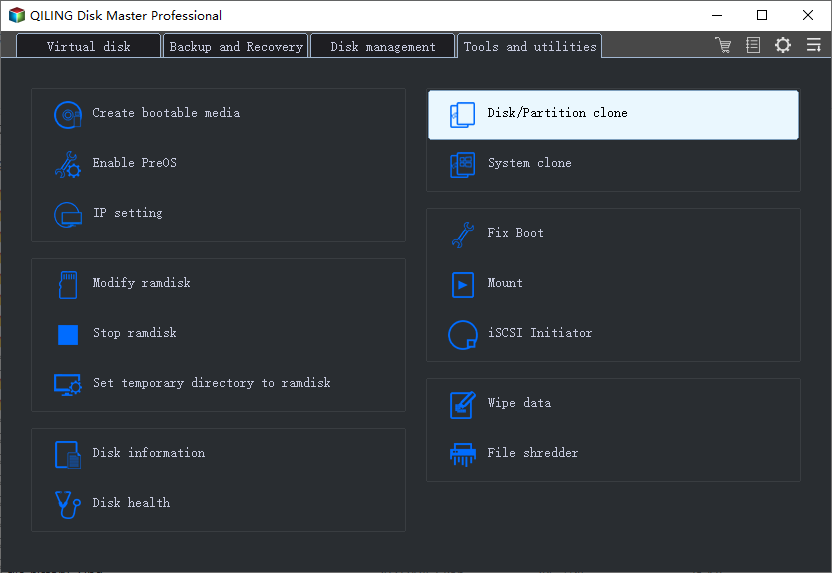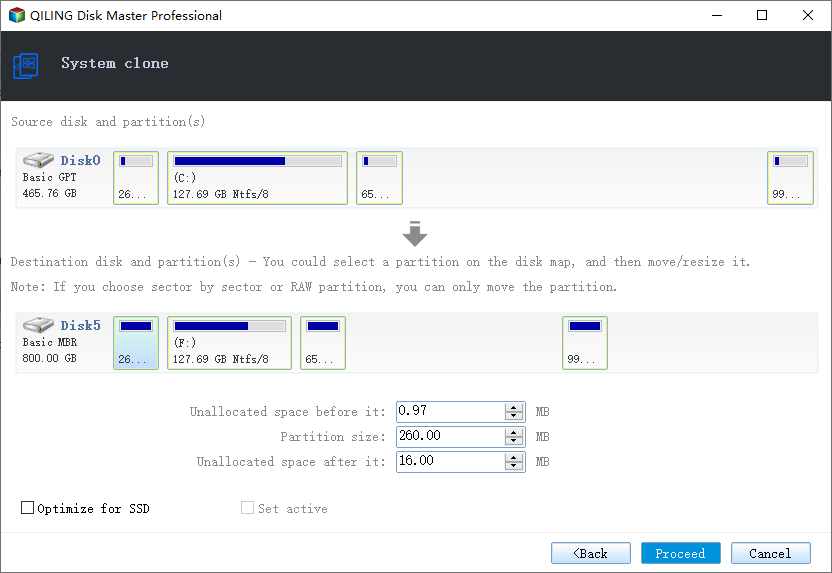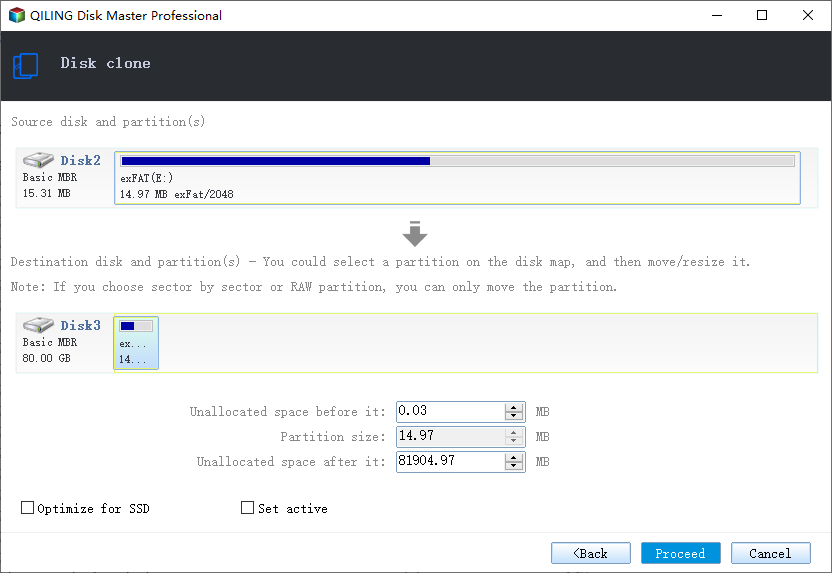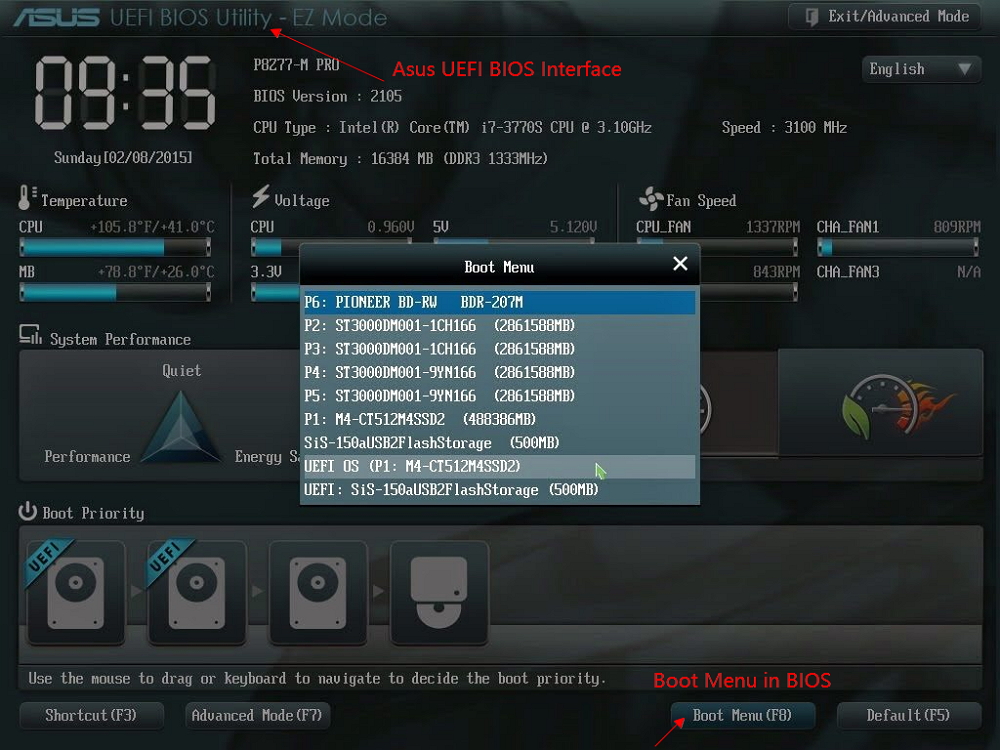Clone SSD/HDD Sector by Sector
Overview of Sector-by-Sector Clone
Most of the backup software would have one feature called "sector-by-sector clone". This feature works when users want to clone their HDD or SSD, it would clone all the sectors on a hard drive, even if the sector is blank or it is a logically bad sector. In case some users are not familiar with the term sector, it is a subdivision of a track on a disk, and each sector stores a fixed amount of user-accessible data.
Generally, a sector-by-sector clone makes no difference to a normal backup. But if your data is of vital importance, and you want to make sure that even if the hard drive has a bad sector, you can still recover data from the bad sector, then you can choose this clone mode.
The sector-by-sector clone also has another apparent advantage. By cloning the disk, you can migrate Windows OS from HDD to SSD without reinstallation, while sector-by-sector clone ensures the target hard disk or partitions keep identical properties (drive status, drive size, drive letter, the number of volumes, etc.) with the source disk or partitions. This feature is significantly helpful when you prefer an exact look of the old disk on a new disk.
Sector-by-Sector Clone SSD/HDD Tutorial
No matter you want to make a sector-by-sector clone or a normal backup, there's a great tool we want to recommend - Qiling Backup. It provides all-in-one computer backup and disk cloning solutions for home and office users. With this tool, you can backup and restore everything instantly, and clone, upgrade and transfer your system easily.
The disk clone feature allows users to transfer all data including system, personal documents, and media files, etc to an upgraded disk, like a brand new HDD, larger HDD, efficient SSD with higher performance. Once the sector-by-sector clone is checked, even if the sector on the source disk is blank or logically bad, it'll be copied to the destination disk without neglect.
Learn how to perform the sector-by-sector clone HDD/SSD with Qiling clone software.
Step 1. Connect the New Second Hard Drive to the PC
Preparations before cloning start:
1. To connect the target disk to your PC, you may need a screwdriver, a Power Splitter Adapter Cable, a SATA cable, or a USB to SATA adapter.
2. Make sure the target HDD/SSD has an equal or bigger capacity than the used space of the old drive.
3. Check whether the style of the new disk is the same as that of the old disk. If not, Initialize a new HDD/SSD to MBR or GPT.
3. Download a Disk Cloning Tool – Qiling Backup

Qiling Backup is the cloning software that integrates multiple functions, including , etc. In the disk clone field, this tool stands out due to the following aspects:
- Support system/disk clone, backup, restoring , and system transfer.
- Covers as many as disk cloning demands, such as update hard drive to a larger one, clone OS, etc.
- Disk cloning has the highest success rate among all similar products on the market.
- Supports all kinds of disk types, including IDE, EIDE, SATA, ESATA, ATA, SCSI, iSCSI, USB 1.0/2.0/3.0.
- Supports cloning of basic/dynamic disks and MBR/GPT disks.
Step 2. Step by Step Guide
System Clone: Choose System Clone > choose the destination disk > click Next to start. In Advanced options, you can choose the option of Create a portable Windows USB drive to clone the system to a USB drive.

Disk/Partition Clone: Choose Clone > Select the resource disk or partition > Select the target disk > Click Next to start.

Step 3. Boot from the Clone Hard Drive

Case 1. If you want to keep both the old disk and the new disk
- Restart PC and press F2 (F8,F10, DEL...) to enter BIOS settings.
- In the Boot option, select new HDD/SSD as the new boot drive.
- Exit BIOS and restart the computer.
Case 2. If you want to only keep the new disk
- Unplug the old disk and make sure the new disk is well connected.
- Connect the new disk and make sure it can be detected by the computer
- Restart your computer.
After the operation is done, close Qiling clone software. Go to Windows Disk Management to check if the cloned disk is exactly the same as the source disk.
For Windows 7 computers, navigate to My Computer -> Manage -> Storage -> Disk Management.
For Windows 10 computers, navigate to This PC -> Manage -> Storage -> Disk Management.
Bonus Tip: How Long Does Sector-by-Sector Clone Take?
Unlike the normal backup, a sector-by-sector clone definitely would take a longer time. According to users' feedback, cloning a 1TB disk sector-by-sector will take 20 to 30 hours. So if you want to make such a time-consuming clone, please be patient.
Related Articles
- Ghost Windows 7 Using Hard Drive Ghost Software
- 2022 Windows XP Backup Software & Backup Utility Free Download
- How to Backup Only New or Changed Files in Windows 10 [2 Ways]
- How to Backup SD Card to Google Photos [Everything Your Need to Know]